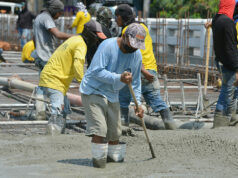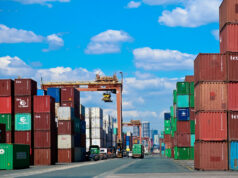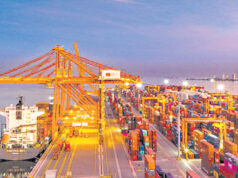Analysts flag concerns on carving up Palawan
By Arjay L. Balinbin
Reporter
PARTITIONING Palawan into three separate provinces will open up more opportunities for local politicians than for economic growth, according to analysts.
On April 5, President Rodrigo R. Duterte signed Republic Act No. 11259 dividing the islands of Palawan into three separate provinces, namely: Palawan del Norte, Palawan Oriental, and Palawan del Sur. The Palace released certified copies of the new law last Saturday, April 13.
Palawan del Norte includes Coron, Culion, Busuanga, Linapacan, Taytay (capital), and El Nido.
Palawan Oriental covers Roxas (capital), Araceli, Dumaran, Cuyo, Agutaya, Magsaysay, Cayancillo, and San Vicente.
Palawan del Sur includes Aborlan, Narra, Quezon, Rizal, Española, Brooke’s Point (capital), Bataraza, Balabac, and Kalayaan.
The three provinces will be created upon approval by the majority of voters in a plebiscite scheduled in May 2020. The election of the first set of officials will be held in May 2022.
Sought for comment, Ateneo School of Government professor Edmund S. Tayao said in a phone interview on Saturday: “I have no idea whether it would entail [economic] opportunities other than opportunities for local political groups to have more positions to vie for because, essentially, they are creating two additional provinces out of one, which means you will be electing two additional governors and additional members of the provincial council and, of course, two additional vice governors.”
Palawan is the country’s largest province in terms of land area at 17,030.75 sq km. In 2016, there were 583,057 registered voters in the province, according to the Philippine Statistics Authority’s June 2018 data.
The measure splitting Palawan into three provinces was filed by Palawan Congressmen Franz E. Alvarez (first district), Erick F. Abueg (second district), and Gil P. Acosta (third district).
Senator Juan Edgardo M. Angara sponsored the bill at the Senate.
Mr. Alvarez is with the National Unity Party (NUP), which forged alliance with Mr. Duterte’s PDP-Laban in 2016; Mr. Abueg ran under the Partido Pagbabago ng Palawan, which is affiliated with Lakas Kampi CMD; and Mr. Acosta is PDP-Laban’s provincial vice-president for Palawan.
According to Mr. Tayao, “Some would probably argue that this would mean bringing the government closer to the people, but even if you only have one provincial government, you have a number of municipalities, anyway, and that basically brings the services down to the people, and so if we go by that logic, there’s actually no need to create more provinces.”
Also sought for comment, University of the Philippines Political Science assistant professor Perlita M. Frago-Marasigan said via chat: “Local politicians may also argue that this move will bring economic development to towns that have been neglected because smaller provinces mean residents will be closer to the multiple centers of power. However, when it is advocated by local politicians whose political ambitions are equally shared by other members of their political families, then redistricting will likely be construed as strategic, particularistic, and selfish.”
Mr. Tayao further explained, “If we are going to compare the Philippines with other countries, we have a very fragmented local governance set-up. If you are going to compare the Philippines with Indonesia, the Philippines is only 15.7% of the total land area of [its Muslim neighbor], which has only 33 provinces. We now have 83 provinces with the addition of two more provinces.”
Creating more positions, he also said, “will increase the cost… Second, it will basically decrease the pie or the internal revenue allotment because you will now have more provinces. Third, it will be more difficult to raise revenues, mainly because you have smaller jurisdiction.”
Also noting that there will be more positions to compete for, Ms. Frago-Marasigan said: “But if the local posts will be monopolized by members of the same political clan or clans, then it is highly probable for their personal and particularistic interests to get in the way of public service.”
“For local politicians, this means reconfiguring their power geographically. For, local residents, this geographic change will affect their lives directly but whether for better or for worse remains to be seen. If territorial power remains concentrated in the hands of a familial few who control these chief local positions and political and economic advantages, I do not see how redistricting will improve the conditions of local residents,” she explained.
In a phone message, Natividad Cristina J. Gruet of the University of Asia and the Pacific-School of Law and Governance said: “As far as I know, [the] declining mining productions, which is the biggest chunk of their economy, is being replaced by service industry — I assume to be tourism for the most part. If designed well, there could be a potential focus on stronger tourism and agri[culture] and aquaculture per new province. But it can also create turf wars and policy inconsistencies [among] three provinces which could lead to more uneven development, especially in areas that do not have mining and tourism.”
For Political Science professor Marlon M. Villarin of the University of Santo Tomas, “politically dividing the province into three parts will give people equal representation in the local governance. It will be socially beneficial because dividing the province will make the local government more responsible and accountable. Economically, it will make the entire province more responsive to both local and global demands.”
Whether the division is necessary, Ms. Gruet said “the plebiscite will answer it.”
Mr. Villarin said, “Public education or consultation will be crucial in determining the results of the plebiscite considering that there are local officials who are really willing to make a countermove towards this intended end.”
There can be both opportunities and risks, according to Ms. Frago-Marasigan. “The new political and geographic divisions may mean that there will be more people to mobilize to implement national programs and more people to be held as accountable for unfulfilled promises. The risks include opening up the territories to political and economic managers who may not be exactly aware of the pressing problems and concerns of the local residents. Creating more local governments means engaging the local communities and residents. This can only happen if there will be genuine participation of the people and constant consultations with them for future local development plans or actions.”
Ms. Frago-Marasigan said that “when a province is divided into small separate provinces and it occurs shortly before the election period, it is called gerrymandering.”
“Politicians do not just propose to divide a province for no reason. So you ask why. The timing and the context matter. What province is being divided into how many areas, for instance? And why is it being done at a given time? Redistricting or gerrymandering will improve the chances of winning of parties or personalities, especially if political and economic territories are strategically divided,” she noted.
But for Mr. Tayao, “When you say gerrymandering, it’s mainly applicable to Congressional seats. That means you are creating a representation on areas which are your bailiwick [or] under your control. To me, the only appropriate term here is fragmentation because the smaller the government unit, the weaker it is able to perform given the many functions and the powers that are afforded to it under the law.”
Former Presidential Spokesperson Harry L. Roque, Jr., who is a native of Palawan, said via text message that the move to divide his home province was not a form of gerrymandering.
“Nope. Gov. [Jose] Alvarez [is] on third term this coming elections. Who will benefit?” he said.



